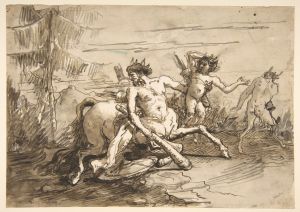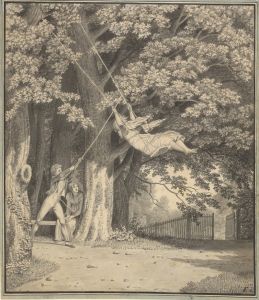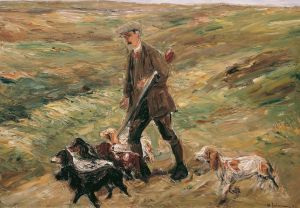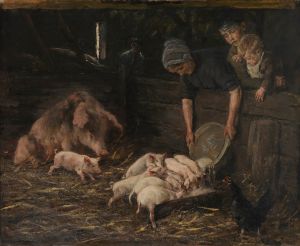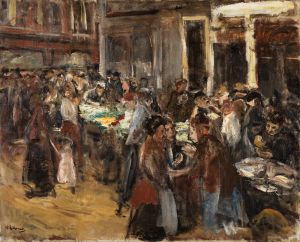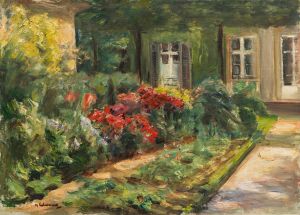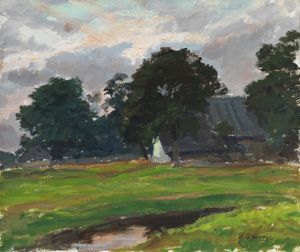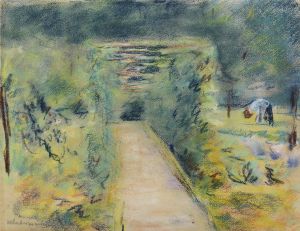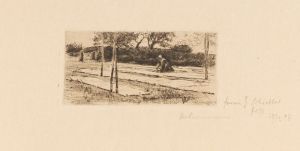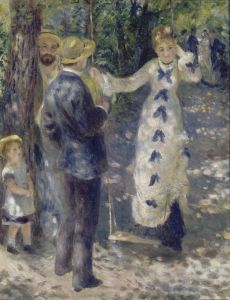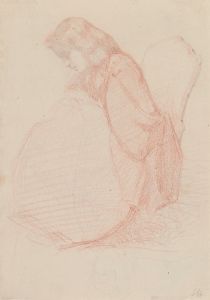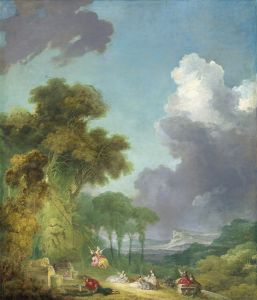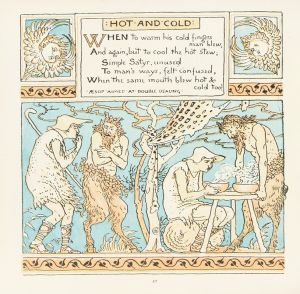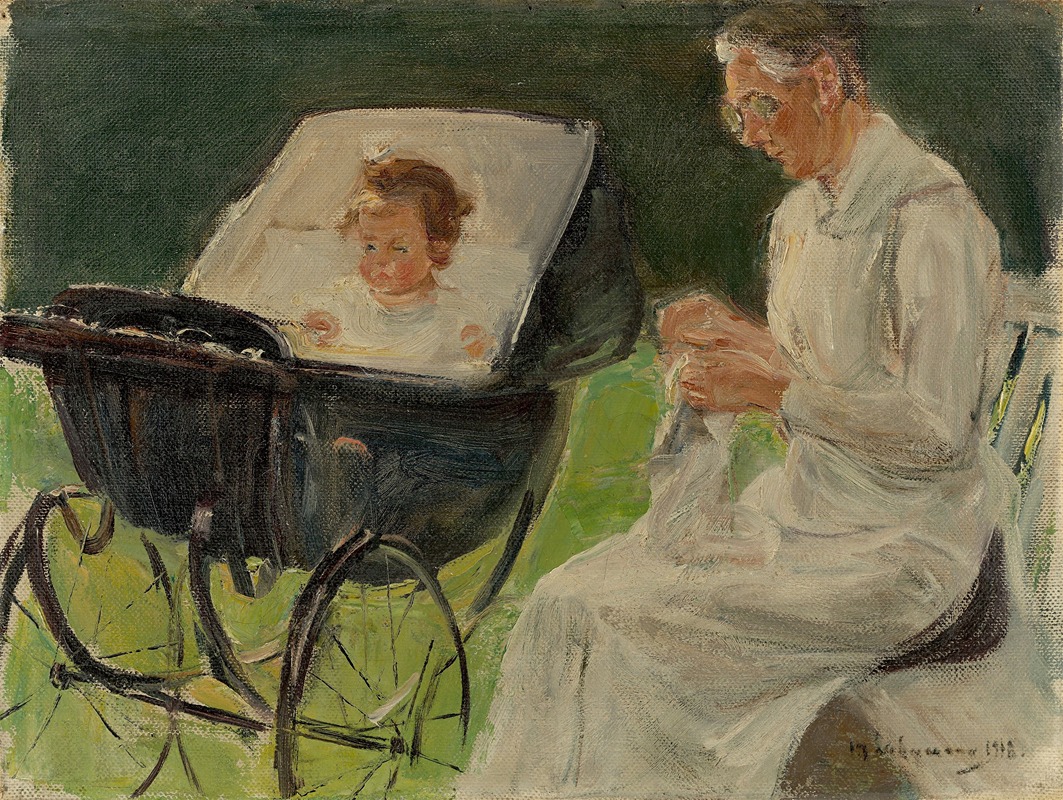
Die Enkelin des Künstlers mit ihrer Kinderfrau im Wannseegarten
A hand-painted replica of Max Liebermann’s masterpiece Die Enkelin des Künstlers mit ihrer Kinderfrau im Wannseegarten, meticulously crafted by professional artists to capture the true essence of the original. Each piece is created with museum-quality canvas and rare mineral pigments, carefully painted by experienced artists with delicate brushstrokes and rich, layered colors to perfectly recreate the texture of the original artwork. Unlike machine-printed reproductions, this hand-painted version brings the painting to life, infused with the artist’s emotions and skill in every stroke. Whether for personal collection or home decoration, it instantly elevates the artistic atmosphere of any space.
"Die Enkelin des Künstlers mit ihrer Kinderfrau im Wannseegarten" (The Artist's Granddaughter with Her Nanny in the Wannsee Garden) is a painting by the renowned German Impressionist artist Max Liebermann. This artwork is a notable example of Liebermann's mature style, characterized by his adept use of light and color to capture everyday scenes with a sense of realism and immediacy.
Max Liebermann, born in 1847 in Berlin, was a leading figure in the German Impressionist movement. He was known for his depictions of bourgeois life, landscapes, and scenes of leisure, often focusing on themes of family and domesticity. His works are celebrated for their loose brushwork, vibrant color palette, and the ability to convey the atmosphere of the moment.
The painting "Die Enkelin des Künstlers mit ihrer Kinderfrau im Wannseegarten" was created during a period when Liebermann spent much of his time at his villa in Wannsee, a suburb of Berlin. This location provided a serene and picturesque setting that inspired many of his works. The Wannsee garden, with its lush greenery and tranquil environment, became a frequent subject in Liebermann's paintings.
In this particular artwork, Liebermann captures a tender moment between his granddaughter and her nanny. The composition is intimate, focusing on the interaction between the two figures set against the backdrop of the Wannsee garden. The painting reflects Liebermann's interest in portraying familial relationships and the simple joys of life.
Liebermann's technique in this painting exemplifies his mastery of light and shadow. The dappled sunlight filtering through the trees creates a dynamic interplay of light across the scene, enhancing the sense of depth and realism. The figures are rendered with a softness that conveys warmth and affection, typical of Liebermann's approach to portraiture.
Throughout his career, Liebermann was influenced by the French Impressionists, particularly Édouard Manet and Edgar Degas. This influence is evident in his use of color and his focus on capturing the fleeting effects of light. However, Liebermann's work also retains a distinct German sensibility, often emphasizing structure and form.
"Die Enkelin des Künstlers mit ihrer Kinderfrau im Wannseegarten" is a testament to Liebermann's ability to blend Impressionist techniques with his own unique vision. The painting not only showcases his technical skill but also offers insight into his personal life and the importance of family to the artist.
Max Liebermann's contributions to art extend beyond his paintings. He was a prominent figure in the Berlin Secession, an art movement that sought to challenge the conservative art establishment in Germany. His leadership and advocacy for modern art significantly influenced the development of German art in the late 19th and early 20th centuries.
Today, Liebermann's works are held in high esteem and can be found in major art collections and museums worldwide. His villa in Wannsee has been preserved as a museum, offering visitors a glimpse into the artist's life and work. "Die Enkelin des Künstlers mit ihrer Kinderfrau im Wannseegarten" remains a cherished piece within Liebermann's oeuvre, celebrated for its beauty and emotional depth.





